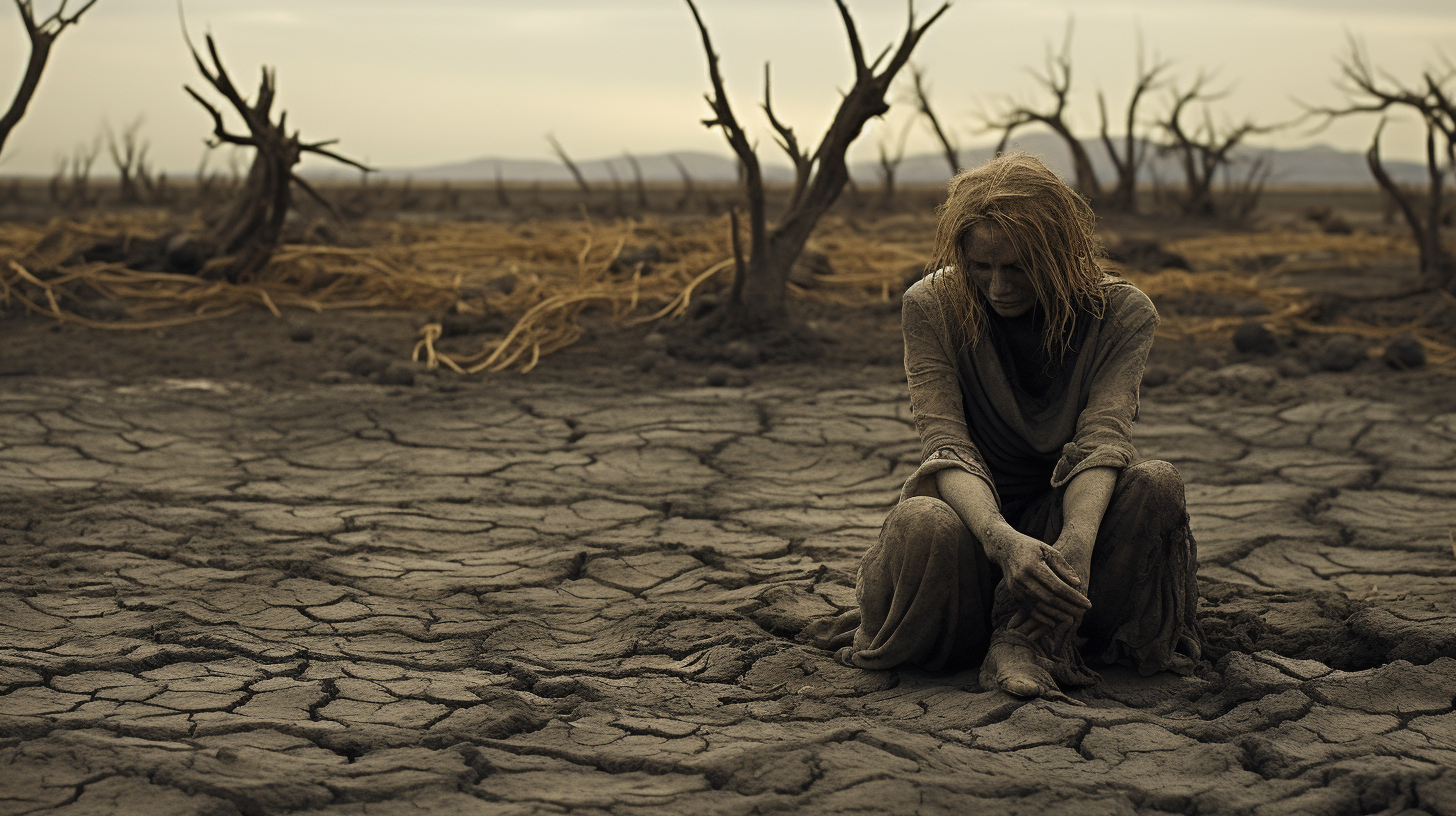The earth lays barren, a once-verdant tapestry unraveled into a desolate tableau. Fields that brimmed with golden wheat and swayed under the caress of the wind now stand eerily silent. In our latest exposition, we delve into the grim aftermath of harvest season – a time traditionally associated with abundance and celebration, now turned into a solemn period of scarcity and resignation.
Today, the post-harvest landscape is not marked by the laughter of satiated children or the convivial exchange among thriving merchants. Instead, the air carries a somber quiet, the Famine’s Quiet, as the populace grapples with the stark reality: the harvest has failed, yet again.
A Creeping Calamity
Recent years have seen a crippling succession of crop failures, an insidious monster born from the womb of a warming world. Our investigations reveal a persistent pattern; fields are sown with the seeds of hope but reaped with the scythe of despair. The plight of a lone farmer, his face etched with the lines of worry and weather, tells a tale more harrowing than words could capture.
“The ground, it’s like stone,” he mutters. “Nothing’ll grow no more, not even the hardiest weeds.”And so the countryside is swallowed by a profound stillness, replacing what used to be the vibrant hum of life. It is not just crops that have vanished; biodiversity faces an unspoken extermination. Creatures that once danced amidst the bounty of nature have all but disappeared, the rich tapestry of ecosystem unraveled by the relentless claws of climate chaos.
The Science of Silence
To understand the forces behind this quietus, we turn once more to the esteemed Dr. Aleksei Dryden, whose expertise paints a stark picture of our new reality. According to Dr. Dryden, “Climate patterns have shifted so significantly that traditional agricultural methods stand obsolete. We’re facing a systemic collapse of the food production chain.”
Technological advancements offer scant comfort when set against the backdrop of such extensive ecological disintegration. Drones that once optimistically surveyed lands, dispensing seeds and nutrients, now glide over the ghostly echoes of fields, their purpose as redundant as the defunct irrigation systems that lie like skeletal remains of a defunct civilization.
Desperation Amongst the Devastation
The silence that has enveloped our food sources extends into the once bustling marketplaces. Stalls, which would groan under the weight of harvest bounty, now stand empty or display pitiful offerings at prices only the elite can afford. Scenes of mutual aid are touching yet tragic, as communities band together sharing what little they have, embroiled in a collective fight against starvation.
Our explorations also unearth a more sinister side of survival: the rise of black markets peddling what’s left of the harvest to the highest bidder. This dangerous gamble of necessity mires the population in a deeper pit of despair, where the currency of exchange is not just money, but morality.
Reflections in the Silence
In this silence, we find a canvas for reflection. The absence of the usual harvest reverie speaks volumes about the consequences of our past actions—or inactions. As this quiet rings in our ears, it begs for a consideration beyond the granaries and greenery: it is a call to address the very root of our existential crisis.
As dark as this vista appears, there is an artful duality within. The oppressive silence forces us to listen, to finally tune in to the cries of a planet in desperate need of salvation. Though we may stand at the precipice of collapse, the very starkness of our predicament might yet prompt the reflection necessary for transformative action, however belated it may be.
This artful rendition of a future all too real, an echo of Calamity’s whisper, serves as a potent narrative, challenging us to envision the path we tread. It is a warning cast in deafening silence, the ultimate requiem for a world ravaged by neglect.
